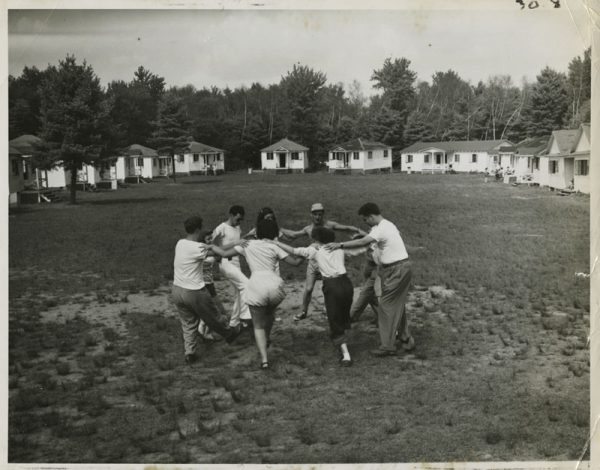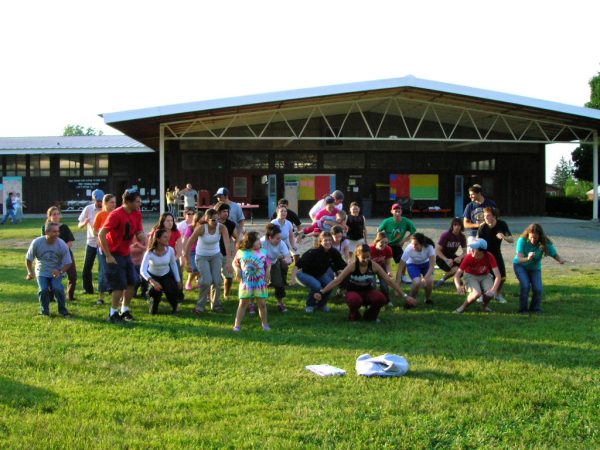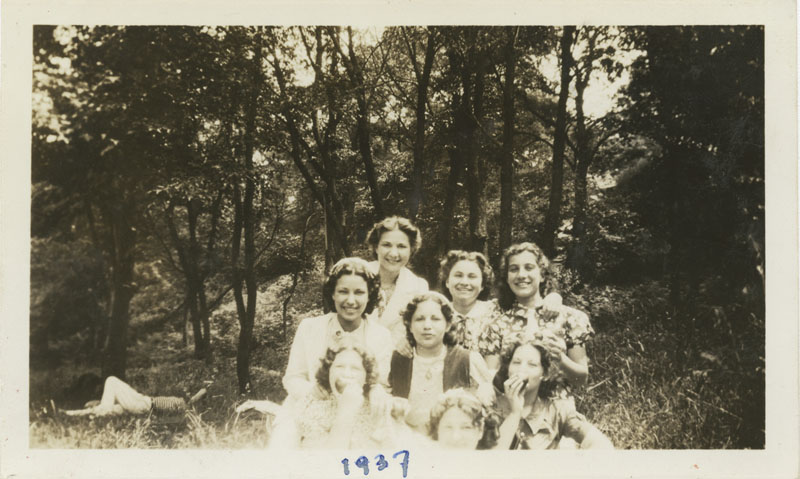As the final school bell rings and class lets out for the summer, thousands of Jewish children head to the middle of the woods, leaving their lives at home behind them. No parents, no technology, and a one-of-a-kind experience. This is Jewish sleepaway camp.
For the past 100 years, attending sleepaway camp has become a custom for Jewish American children across the U.S. With a variety of different camps primarily located along the East Coast, thousands of young Jews trade their busy lives at home to spend time in the great outdoors. Ranging from two weeks to two months, camp can be an all-summer experience that attendees look forward to throughout the school year.
Although summers are filled with the fun and games that typical summer camps are known for, Jewish camps in particular help children to form their identity in a world where the Jewish population has become exceptionally small. These camps help to keep American Judaism alive, and pass down the culture to the next generations in a fun and engaging way.
Even today, it is not always easy to own your religion, this being exceptionally hard for freshly emigrated Eastern European Jews in the early 20th century. In fact, Jewish camp originally started as a way for these children to assimilate into American life.
Throughout the late 19th century and early 20th century, many Eastern European Jews made the trip to the U.S. after being persecuted in their homelands, in search of a home in the land of opportunity. But like many immigrants of the time, when they finally set foot on American soil, they had little money and few resources, drawing them to tenement housing in New York City.
Tenement buildings are small apartments stacked overtop each other in order to maximize the number of people living in one space. Up to 18 people were crammed into just one apartment, and thousands of immigrants were forced to live in these overcrowded and dirty conditions.
Unfortunately, around this time the polio outbreak began, sending a frenzy across the entire country. The first U.S. outbreak occurred in 1894 and began to pick up speed throughout the early 20th century.
Polio is a disease that spreads primarily amongst children, and in some cases, can even paralyze them. The chances that a person was to contract polio in the city, compared to a person living in the suburbs, was already high due to the sheer number of people living in New York. This, coupled with the cramped tenement housing, meant Jewish children were uniquely at risk.
Early Jewish camps were created to give children an escape from the urban pollution they had known their whole life and live outdoors in fresh, clean air. They had the opportunity to run around and play in a safe environment, free from polio and the other discomforts of city life. The first Jewish camp in New York, Camp Lehman, opened its doors in 1893, and shortly after, many others began to emerge.

Yet, the main goals of these camps were not only to prevent the spread of polio. They also served the purpose of Americanizing Jewish immigrants. During this time, anti-Semitism in America was at an all-time high. Jews were denied entry to various institutions, and in particular prestigious universities, due to Jewish quotas. These quotas were enforced in schools across the U.S. throughout the mid-20th century in order to limit the number of Jews who had access to higher education.
Furthermore, infamous racists like E.A. Ross instilled the belief that the Jewish people were “weak and limp,” symbolizing racial degeneracy. Jewish summer camps were an attempt to counter this belief. Camps implemented exercise and different diets to create a “muscular Judaism” aimed to parallel the “ruggedness” of Christian camps. This came in the form of different types of sports competitions and a “milk call” to help the children grow larger, into their depiction of an all-American child.
Despite these initiatives to make Jews physically look more American, the camp programming was not very Jewish at all. In fact, the only thing setting apart the camps as Jewish were the Jewish demographics of both campers and staff. Apart from this, they were a typical American summer camp.
However, as World War II came to a close, this all changed.
Many Jews had fought in the war like other members of American society, meaning that when the war finally came to a close, they received the same benefits that many fellow veterans did. This influx of new wealth launched Jews into middle-class society, and out of city tenement buildings. Many Jews who had previously called the city home moved to the suburbs, further integrating them into American society. Due to this, Jewish communities began to disperse, causing many families to fear the loss of their culture.
However, the more prominent event fueling this fear was the Holocaust, which had just ended at the time. The thought that the Jewish population could be so easily diminished instilled fear in many Jewish families throughout America. Yet it also brought a renewed interest in preserving their culture and traditions. Jewish people began to take pride in their religion, breaking free of the crippling constraints telling them to be more “American.” This idea was reflected in all aspects of Jewish life, including camp.
Many Jewish camps that used to promote assimilation began to promote cultural appreciation and renewal. Campers would sing Hebrew songs, perform in plays or musicals with Jewish themes, and participate in Shabbat services every Friday night. Just engaging in day-to-day activities instilled Jewish values and a sense of community that was hard to find at home.
Various studies have found that Jewish adults who attended camp are more likely to be active Jews, belonging to synagogues and donating to Jewish organizations. Moreover, people who went to camp themselves are more likely to send their children, ensuring a Jewish future.

Camp also ended the idea that Judaism was a chore, something that many children had begun to believe, and made being Jewish fun. Julie Finkelstein, the senior director of program strategy and innovation for the Foundation for Jewish Camp, shares this belief. The Foundation for Jewish Camp oversees all Jewish camps in North America, with Finkelstein’s job being to oversee the leadership and professional development programs. She found that attending camp helped to shape her identity, and gave her “the understanding that we can be creative and have fun with Jewish life.”
Finkelstein has chosen to work with camps her entire life, mainly due to the fact that “young people have the capacity to make a huge difference in the world. And to take action on the people I care about, I really learned all about that at camp.” Camp has given young Jews across the country the opportunity to find themselves and to explore their culture, helping to create the Jewish leaders of tomorrow.
For the past 100 years, camp has been a constant in the lives of Jewish children in an ever-changing world. While society’s thoughts on Judaism may always shift, at camp, children will always have a supportive community they can turn to, keeping the culture alive.
“Young people have the capacity to make a huge difference in the world. And to take action on the people I care about I really learned all about that at camp,” said Julie Finkelstein, the senior director of program strategy and innovation for the Foundation for Jewish Camp.

